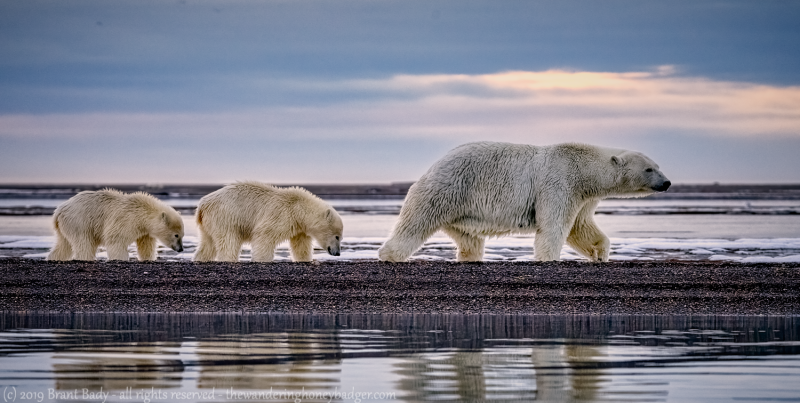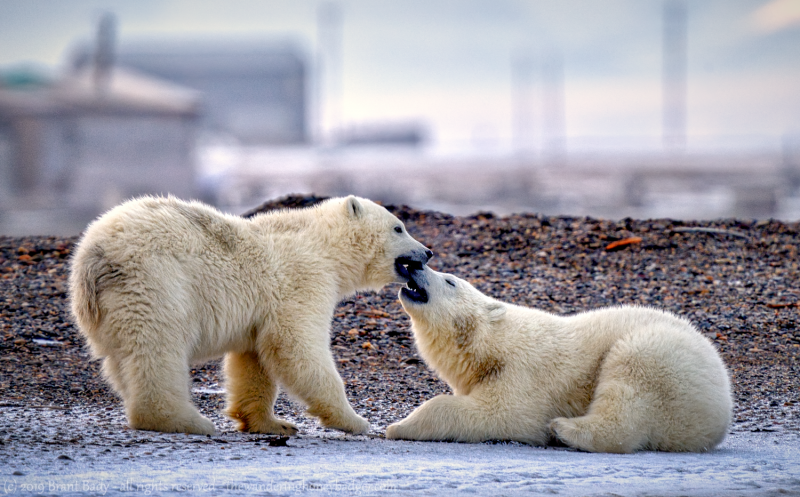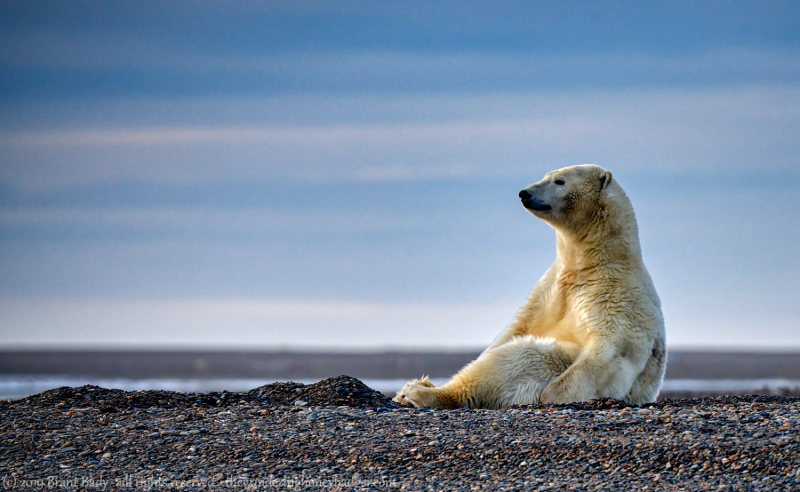
Polar Bear Conservation
Like many species around the world, polar bears are facing loss of habitat due to shrinking sea ice in the Arctic.
“Over the 41-year satellite record, the Arctic has lost about 1.9 million square kilometers (734,000 square miles) of ice in December, based on the difference in linear trend values in 2019 and 1979. This is comparable to the size of Alaska and California combined.”
National Snow and Ice Data Centre, USA
The bears rely on getting out on the ice to hunt seals, and with the ice is greatly reduced that makes their survival more difficult. Even the twenty-something son of our guide in Alaska noted that he remembers when the edge of the sea-ice was visible from the village in the summer just a decade or so ago. Now the ice is completely out of sight in the summer.
The bears on the Beaufort Sea where these images were taken are one of the polar bear sub-populations that are on the decline in terms of numbers. It is only in recently that the bears started to hang around this location, but polar bears everywhere are now spending more time on land than they did previously.

One can surmise that faced with an earlier ice thaw, and a much later freeze up, the bears are inclined to scrounge what food they can find. The village whale bone pile is a gift to the bears when the carcasses are first deposited, but the bones are stripped clean within a few months. More problematically, the bears become habituated to checking out the whale bone pile, and hanging around human civilization in search of scraps.
Reduced sea ice dramatically increases the likelihood of bear-human interaction, although one must note that the data about polar bear attacks seems to indicate that no attacks occured at whale bone piles, and few were the result of females protecting cubs. Typically, attacks occur by food stressed adult male bears invading field camps and towns. Certainly the residents in these towns and camps are both taking measures to reduce attractants like garbage, and taking steps to protect people.
Whether polar bears around the globe will be able successfully adapt to these changing conditions, as they “may” have done in the past, or will they disappear into oblivion as a species remains to be seen. The best estimates, such as the red list prepared by the IUCN, International Union for Conservation of Nature, suggest that polar bear populations will drop by nearly one third by 2050.
The one prediction nearly guaranteed to come true in the near term is that conflicts between polar bears and humans will increase as the bears try to find new ways to forage to survive.

Polar Bear Zen – Contemplating Its Own Extinction?
Perhaps the above caption is overstated, but surely the bear will be thinking its polar bear thoughts sometime soon about its next meal, because that’s what bears do. Its next meal and the one after that, and the one after that, and so on, will surely determine its own fate, and perhaps in part, of the fate of its whole species. That may be as Zen-like that polar bears get in terms of contemplation… but if one spends some time observing the bears, one discovers they are very good at being still as well, so maybe they are the ultimate animal zen masters.
In any event they are marvelous creatures and they deserve the best chance for survival that we can give them, as their fate is most certainly in our hands!

In case you were wondering, why many of the bears in these photos, but not all, aren’t pure white in the colour of their fur (their skin is black some sometime its just the angle of light and the lay of their fur), but mostly the reason is that the more time on land they spend, particularly when there is no snow, the dirtier their fur gets. Noting also that habitually they strive to be very clean, and will self-groom, swim in the water, and even take baths in the snow. As the Arctic continues to warm, one can expect this visual marker to be even more evident.
Please do help support their ongoing survival by trying to live greener yourself, either in small parts like this slideshow from Prevention Magazine about 70 ways you can live greener and/or go big and try to go as carbon neutral as you can through buying carbon offsets through planting more trees!
Big or Small, Just Do Something!
Also, do continue to come back for one or two more posts in this series.
